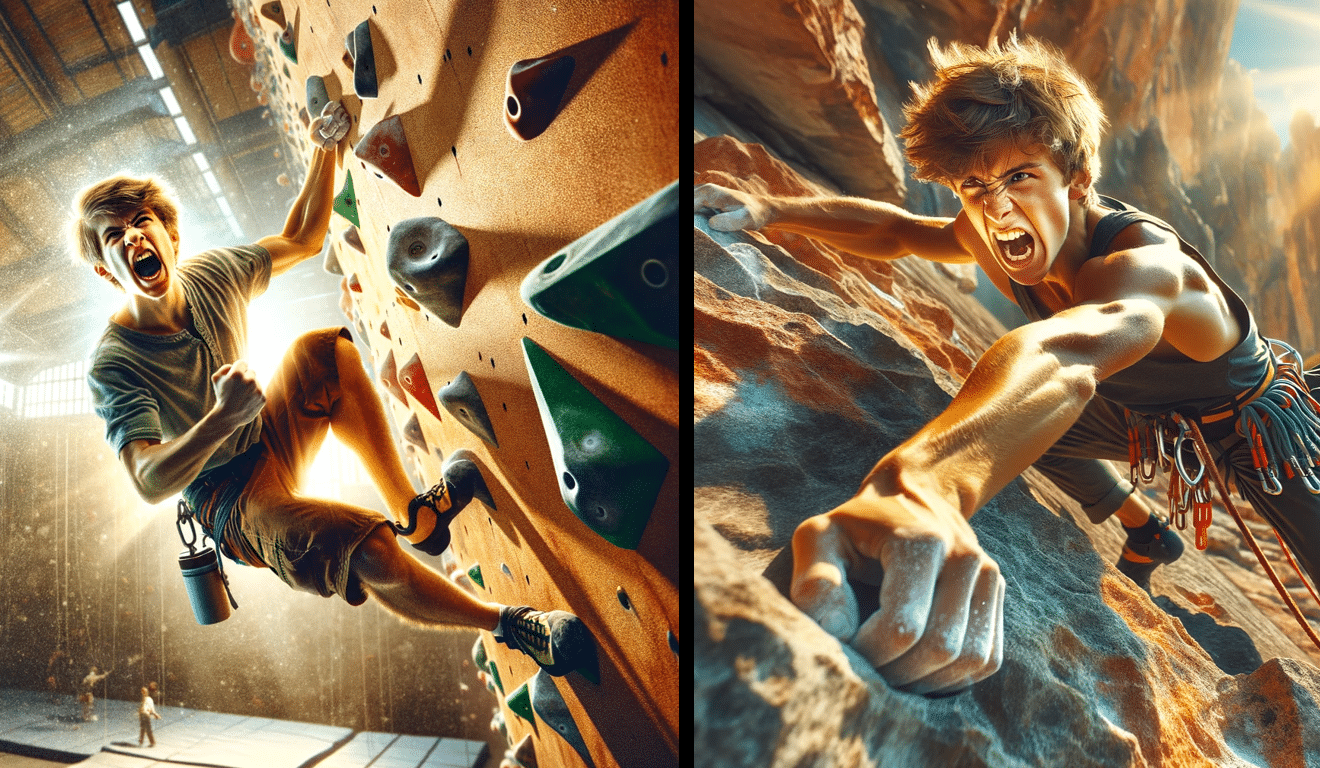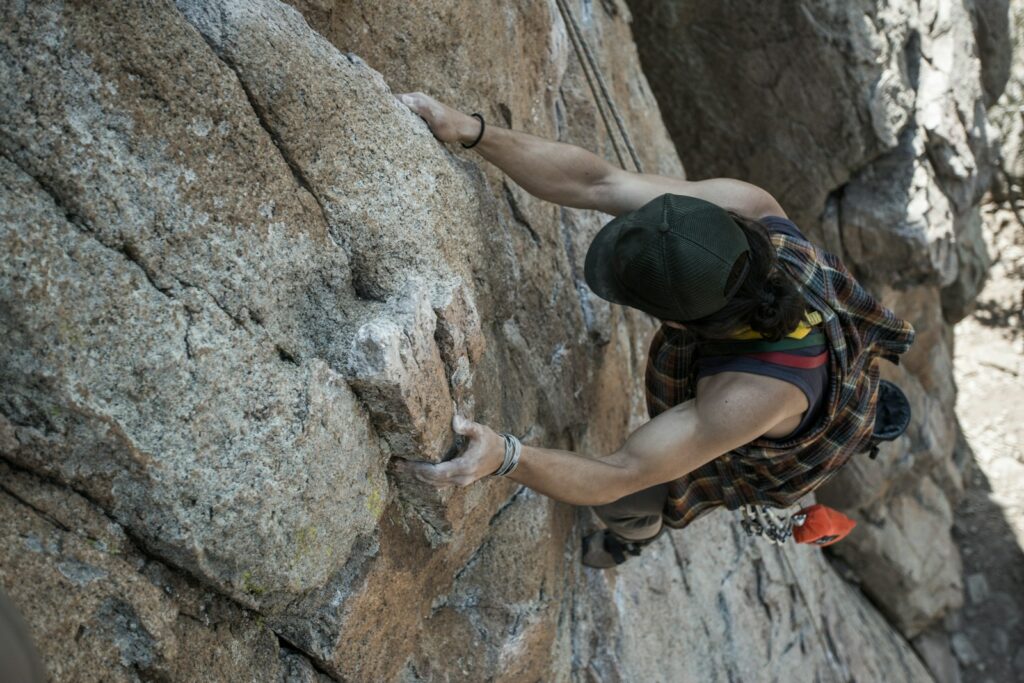Table of Contents
ToggleIntroduction to Rock Climbing
Rock climbing is an adventure-filled sport that challenges both your physical and mental strength. There are various styles of rock climbing, each offering a unique experience. In this article, we’ll focus on ‘trad climbing vs sport climbing’, two popular styles that often spark much debate among climbers.
My Personal Experience with Rock Climbing
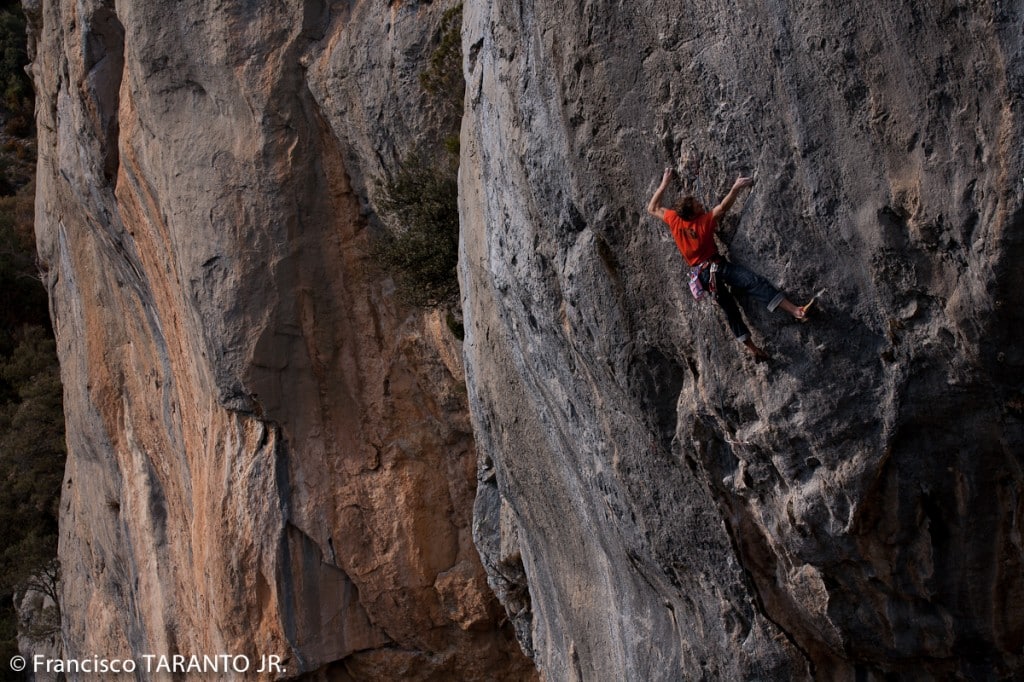
I have been a rock climber for over 10 years, and I’ve tried my hand at various styles, from bouldering to ice climbing. However, I’ve always found myself drawn to the thrill and challenge of trad climbing. It’s not just about the physical strength or the adrenaline rush, but also the mental strategy that goes into maneuvering through routes and placing gear.
In contrast, sport climbing, with pre-placed bolts and often more gymnastic movements, has given me a different kind of thrill and challenge. It’s like a high-speed race against gravity, pushing your limits while relying on the safety of fixed protection.
Brief Overview of Different Climbing Styles
Rock climbing styles can be broadly divided into indoor and outdoor climbing. Indoor climbing includes bouldering and sport climbing in a controlled environment, while outdoor climbing presents more varied styles like trad climbing, sport climbing, alpine climbing, and more.
Trad climbing, or traditional climbing, is a style where climbers place all the required gear for protection against falls themselves and remove it when the passage is complete. It’s a purist’s form of climbing, often regarded as the original form of the sport. It requires a deep understanding of climbing gear, techniques, and safety measures, which you can read more about in our guide to trad climbing for beginners.
Sport climbing, on the other hand, is a more modern style of climbing. Here, climbers ascend routes with pre-placed bolts fixed into the rock. It’s an athletic and dynamic style of climbing, focusing more on physical strength and less on gear placement.
Both these styles of climbing come with their unique sets of challenges and rewards. As we delve deeper into the world of ‘trad climbing vs sport climbing’, I’ll share insights from my personal experiences, tips and techniques I’ve learned over the years, and the nuances that make each of these styles unique and exciting in their own way. Let’s get started!
Unpacking Trad Climbing
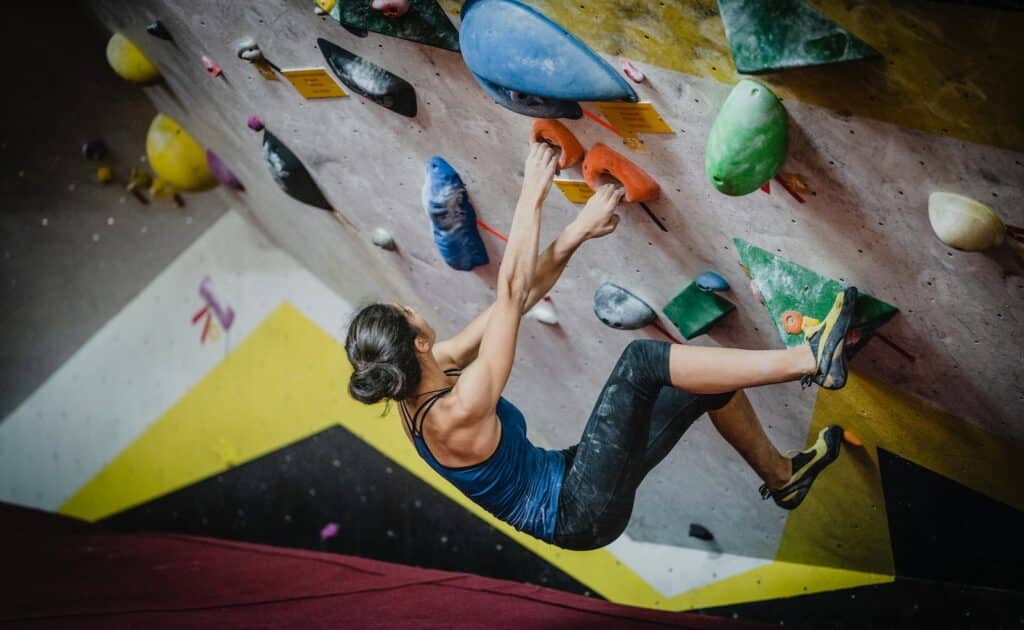
In the world of rock climbing, there are numerous styles to explore, each with its own set of challenges and thrills. Among these styles, traditional, or ‘trad’, climbing stands out as a particularly intriguing and rewarding option. In this section, I’ll delve into the specifics of trad climbing, discussing its unique characteristics, benefits, and challenges.
What is Trad Climbing?
Trad climbing is a style of rock climbing where climbers place all necessary gear for protection against a fall while ascending. Unlike sport climbing, where pre-placed bolts are used, trad climbers must carry and place their own gear, such as cams, nuts, and hexes.
This gear is removed by the second climber, leaving no trace of their journey. This style of climb often requires more thought and planning than sport climbing, as climbers must decide where and when to place their gear for optimal safety.
The Thrills of Trad Climbing
For me, the thrill of trad climbing lies in its unpredictability and the deep connection it fosters with the rock. Since the placements are not predetermined as in sport climbing, each climb is a unique experience. You’re faced with the challenge of navigating the rock face and making crucial decisions on the fly, which can be both mentally stimulating and physically demanding.
Another aspect of trad climbing that I find exhilarating is the heightened sense of responsibility and self-reliance. You’re not only climbing but also actively ensuring your safety through correct gear placement. This can instill a great sense of accomplishment and boosts your confidence in your climbing abilities.
The Challenges of Trad Climbing
While the thrill of trad climbing is undeniable, it’s important to note that this style of climbing also presents its own set of challenges. The need for gear placement means it requires a solid knowledge of different types of protection and an understanding of rock features to determine the most secure placements. It’s crucial to educate yourself about trad climbing protection and practice trad climbing gear placement.
Additionally, trad climbing can be more physically and mentally taxing than other styles of climbing. Carrying a heavier load of gear can be tiring, and the process of placing and removing gear can interrupt the flow of your climb. Plus, the need to constantly evaluate safety factors can add a layer of mental challenge.
Despite these challenges, the rewards of trad climbing are immense. The feeling of conquering a challenging route using your own skill and judgment is unparalleled, and the deep connection with nature that trad climbing fosters can be profoundly satisfying. It’s definitely a style worth exploring if you’re seeking a new climbing challenge. For beginners interested in trad climbing, take a look at our guide on trad climbing for beginners.
Understanding Sport Climbing
In the realm of rock climbing, sport climbing is a popular style that offers its own unique set of challenges and rewards.
What is Sport Climbing?
Sport climbing is a form of lead climbing that relies on permanent anchors fixed to the rock for protection. Unlike trad climbing, where climbers place and remove their own protective gear as they ascend, sport climbing routes are pre-equipped with bolts drilled into the rock. This allows climbers to focus more on the physical aspects of the climb, such as strength, endurance, and technique.
The Excitement of Sport Climbing
For me, the true excitement of sport climbing lies in its athletic nature. It’s all about pushing your physical limits, mastering complex movements, and overcoming challenging sequences. With sport climbing, you’re often tackling steep, overhanging routes that require dynamic movements and a lot of power. Plus, since the routes are pre-bolted, you can really push yourself without worrying too much about the potential for a big fall.
This style of climbing also lends itself well to competition, with indoor sport climbing events being a staple in climbing competitions worldwide, even making its debut in the Olympics!
The Difficulty of Sport Climbing
Sport climbing can be physically demanding, requiring a blend of strength, endurance, flexibility, and technique. The routes often involve steep, overhanging sections that necessitate dynamic movements and sustained effort. Mastering these aspects of sport climbing can be a rewarding challenge.
One of the main difficulties of sport climbing, particularly for those transitioning from trad climbing, is the mental adjustment. While the physical act of climbing may be more strenuous, the mental game is often less so. You’re not placing your own protection, so the risk factor is different. For some climbers, this can be a challenging adjustment.
However, don’t let this discourage you! With practice, perseverance, and the right mindset, you can master the challenges of sport climbing. Remember, every climber’s journey is unique, and what may be difficult for one might come easily to another.
When comparing ‘trad climbing vs sport climbing’, it’s important to understand that both styles have their own unique elements of challenge and excitement. The choice between the two often comes down to personal preference, climbing goals, and comfort level. Whether you’re drawn to the adventurous nature of trad climbing or the athletic challenge of sport climbing, both styles offer rewarding experiences and endless opportunities for growth.
In the next section, we’ll delve deeper into the key differences between these two climbing styles, considering factors such as gear, techniques, and risk and safety factors. Stay tuned!
Trad Climbing vs Sport Climbing
In my journey as a rock climber, I’ve had the opportunity to explore both trad climbing and sport climbing. While they both involve ascending a rock face, the gear, techniques, and risk factors involved can be quite different. Let’s dive into the specifics.
Comparing the Gear
In terms of gear, trad climbing requires a more extensive set. You’ll need a range of cams, nuts, slings, carabiners, and other pieces of protection. Not to mention, you’ll also need the standard climbing gear like a harness, helmet, and shoes.
On the other hand, sport climbing requires less gear as the routes are typically bolted. All you’ll need are quickdraws, a harness, belay device, and climbing shoes.
Comparing the Techniques
The techniques used in trad climbing and sport climbing vary quite a bit. Trad climbing requires a strong understanding of gear placement, anchor building, and a range of climbing styles such as crack climbing, offwidth, and layback. It’s important to learn and practice these techniques before heading out on a trad climb. Check out our guide on trad climbing techniques for an in-depth look.
Sport climbing, on the other hand, focuses more on physical strength, endurance, and climbing techniques. It’s more about pushing your limits and working on hard, physically demanding routes.
Comparing the Risk and Safety Factors
In terms of safety, both trad climbing and sport climbing have their risks. Trad climbing has a higher degree of risk due to the reliance on self-placed protection. It’s crucial to have a solid understanding of gear placement and anchor building to climb safely. You can learn more about these safety aspects in our trad climbing safety guide.
Sport climbing, while considered safer due to the use of fixed bolts, isn’t without its risks. Falls can still happen, especially if climbers push their limits on difficult routes. But generally speaking, the risks in sport climbing are more predictable than in trad climbing.
Whether you choose trad climbing or sport climbing, it’s important to learn the necessary safety skills, use the right gear, and always climb within your abilities. And remember, the mountains aren’t going anywhere. It’s always better to back off and climb another day if something doesn’t feel right.
Making Your Climbing Choice
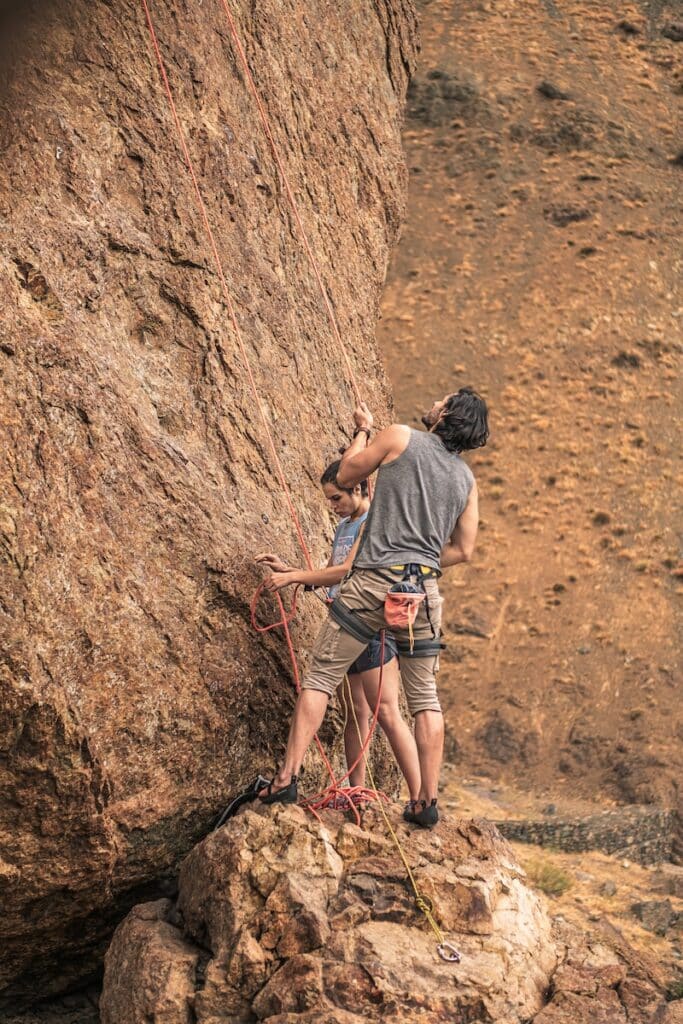
After exploring the intricacies of trad climbing and sport climbing, you might be wondering which one to choose. Here’s my take on it:
Factors to Consider When Choosing a Style
Choosing between trad climbing and sport climbing depends on several factors. These include your comfort level with heights and exposure, your physical strength and endurance, your mental fortitude, and the type of climbing experience you’re seeking.
If you’re someone who enjoys solving complex problems and being self-reliant, you might find trad climbing more to your liking. It requires a deeper understanding of gear placement and route finding, which can be mentally stimulating and rewarding. You can learn more about trad climbing gear placement in our trad climbing gear placement article.
On the other hand, if you’re more interested in pushing your physical limits and climbing at a faster pace, sport climbing might be a better fit. It allows you to focus more on the physicality of climbing since the protection is already fixed on the route.
The Importance of Personal Preference and Comfort
Regardless of the technical aspects, your personal preference and comfort level play a critical role in determining which style of climbing is right for you. If you’re more comfortable with the idea of using pre-fixed bolts for protection, sport climbing could be your go-to style. But if you’re intrigued by the idea of placing your own gear and creating your own path, then trad climbing might be more appealing.
Remember, climbing is all about enjoying the process and pushing your own boundaries. It’s essential to choose a style that you’re comfortable with and that you find enjoyable.
The Value of Trying Both Styles
While it’s helpful to have a preference, I believe there’s immense value in trying both styles of climbing. Trad climbing and sport climbing each offer unique challenges and rewards, and experiencing both can help you become a more versatile and well-rounded climber.
By trying both styles, you can not only broaden your climbing skills and experience but also gain a deeper appreciation for the complexity and diversity of the sport. For instance, you could start with sport climbing to build your confidence and technique, then move on to trad climbing to challenge your mental toughness and decision-making skills.
Also, it’s worth noting that the choice isn’t necessarily permanent. Many climbers engage in both trad climbing and sport climbing depending on the situation, their mood, or the specific climb. I’ve found that this flexibility can make the climbing experience even more enjoyable and fulfilling.
So whether you’re drawn to the freedom and self-reliance of trad climbing or the physical intensity and speed of sport climbing, don’t be afraid to explore both styles. Happy climbing!

